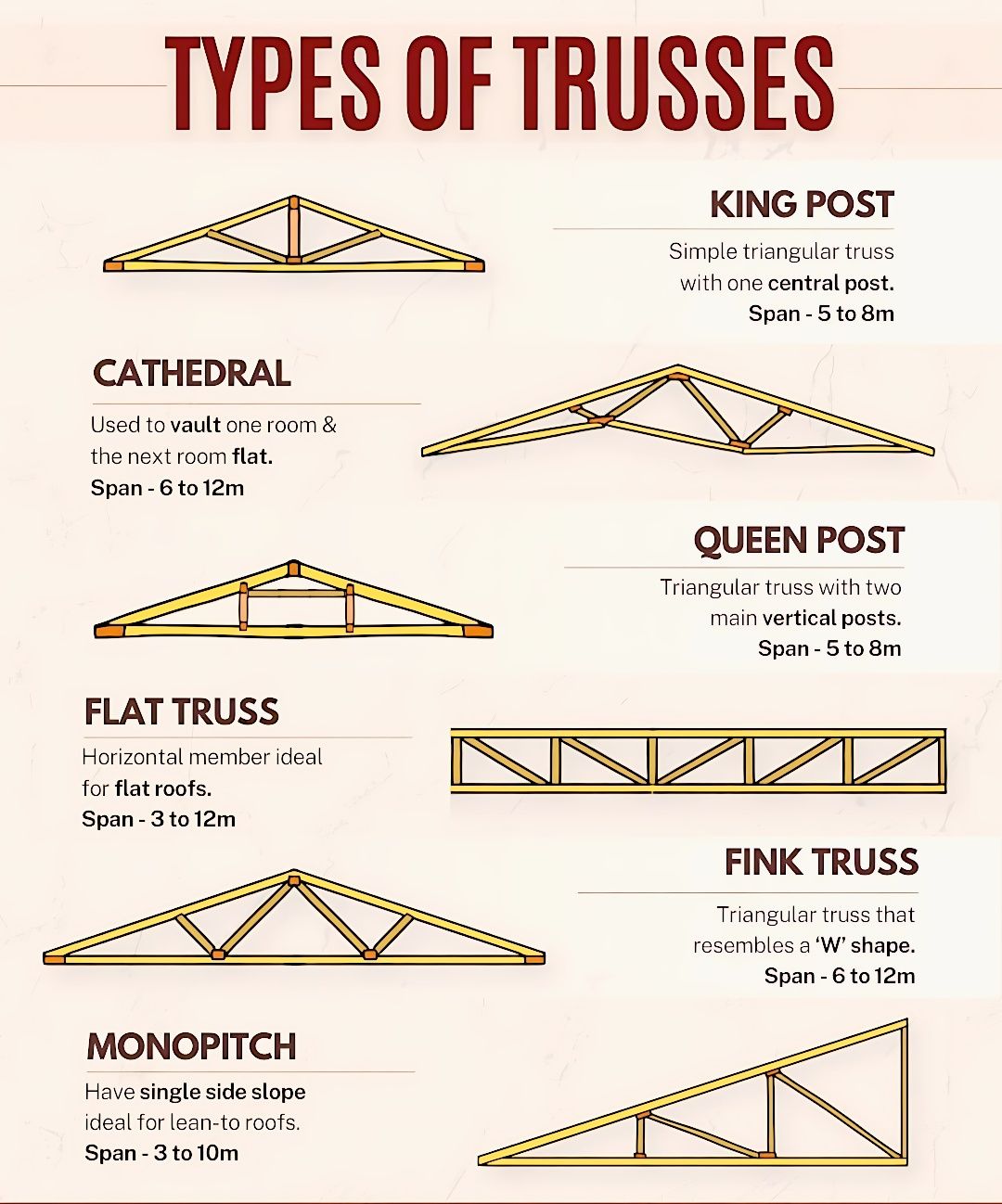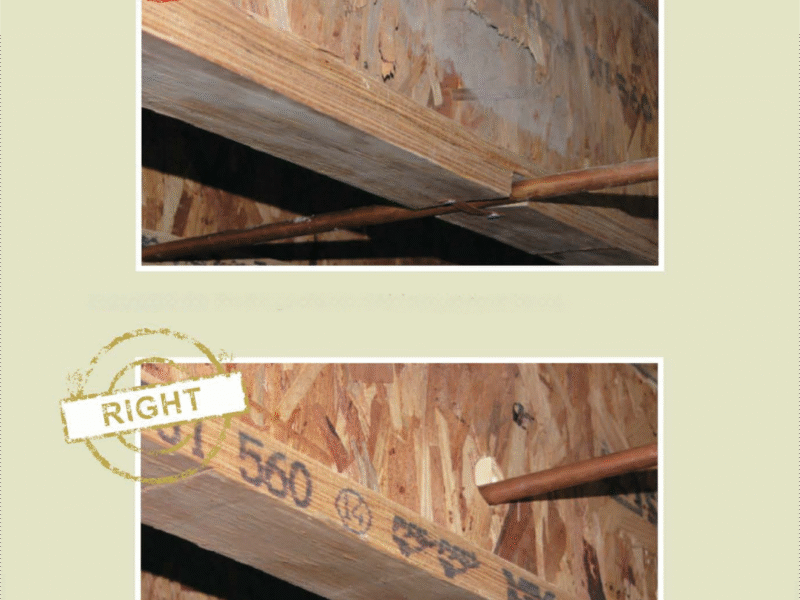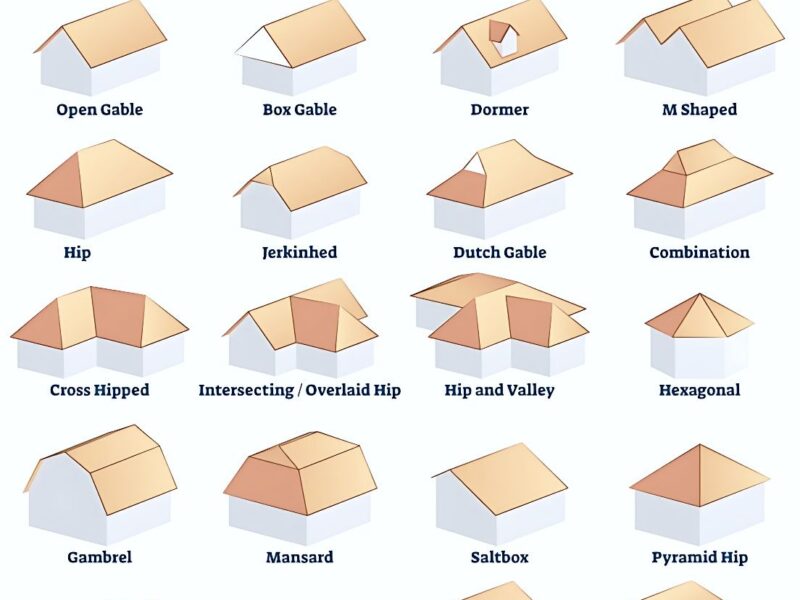The graphic effectively provides a visual and textual introduction to the fundamental types of trusses, their general applications, and typical dimensions, making it a useful resource for understanding basic structural roof components.
1. King Post Truss:
* Description: This is one of the simplest triangular truss designs. It features a central vertical post (the king post) extending from the apex (peak) down to the center of the bottom chord, with two diagonal members connecting the apex to the bottom chord.
* Characteristics: It’s economical and effective for shorter spans.
* Typical Span: 5 to 8 meters.
2. Cathedral Truss:
* Description: This truss type is designed to create a vaulted ceiling in one room while allowing a flat ceiling in an adjacent room (or a portion of the same structure). It features an open space below the top chords in one section and a horizontal bottom chord in another section.
* Characteristics: Provides architectural flexibility for varying ceiling heights.
* Typical Span: 6 to 12 meters.
3. Queen Post Truss:
* Description: Similar to the king post, but instead of one central vertical post, it has two vertical posts (queen posts) that extend from the top chords down to the bottom chord. These vertical posts are typically connected by a horizontal tie beam (collar tie) near the top.
* Characteristics: Offers greater clear span capabilities than a king post truss and can create a more open space below.
* Typical Span: 5 to 8 meters.
4. Flat Truss:
* Description: Despite the name, a flat truss still has a very slight pitch for drainage, but its overall appearance is horizontal. It consists of parallel top and bottom chords connected by a web of diagonal and/or vertical members, forming a rectangular or slightly trapezoidal shape.
* Characteristics: Ideal for flat roofs or floors, providing structural support over a horizontal span.
* Typical Span: 3 to 12 meters.
5. Fink Truss:
* Description: This is a very common and efficient triangular truss. Its internal web members form a distinctive “W” shape (or inverted “V”s) between the top and bottom chords.
* Characteristics: Highly efficient for transferring loads and widely used in residential and light commercial construction due to its good strength-to-weight ratio.
* Typical Span: 6 to 12 meters.
6. Monopitch Truss (or Lean-to Truss):
* Description: This truss has a single sloping top chord and a horizontal bottom chord, forming a right-angled triangle.
* Characteristics: Ideal for lean-to roofs, additions, or structures where only a single slope is desired, such as carports or sheds attached to an existing building.
* Typical Span: 3 to 10 meters.


